Transportation, the movement of humans, animals and goods from place to place and the various means by which such movement is accomplished. The growth of the ability—and need—to transport large quantities of goods or numbers of people over long distances at high speeds in comfort and safety has been an index of civilization and in particular of technological progress.
Transport is important because it enables trade between people, which is essential for the development of civilizations. Transport modes are the means by which passengers and goods achieve mobility. They are mobile transport assets and fall into one of three basic categories, depending on over what surface they travel; Land (Road, Rail and Pipelines), Water (Shipping), and AIR. Each mode is characterized by a set of technical, operational and commercial characteristics.Mode of Transport and Infrastructure
a. Road Transportation
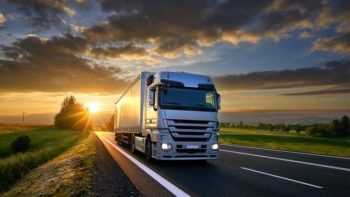 Road infrastructures are large consumers of space with the lowest level of physical constraints among transportation modes. However, physiographical constraints are significant in road construction with substantial additional costs to overcome features such as rivers or rugged terrain. While historically road transportation was developed to support non-motorized forms of transportation (walking, domestic animals and cycling at the end of the 19th century), it is motorization that has shaped the most its development since the beginning of the 20th century.
Road infrastructures are large consumers of space with the lowest level of physical constraints among transportation modes. However, physiographical constraints are significant in road construction with substantial additional costs to overcome features such as rivers or rugged terrain. While historically road transportation was developed to support non-motorized forms of transportation (walking, domestic animals and cycling at the end of the 19th century), it is motorization that has shaped the most its development since the beginning of the 20th century.
Road transportation has an average operational flexibility as vehicles can serve several purposes but are rarely able to operate outside roads. Road transport systems have high maintenance costs, both for the vehicles and infrastructures. They are mainly linked to light industries and freight distribution where rapid movements of freight in small batches are the norm. Yet, with containerization, road transportation has become a crucial link in freight distribution.
b. Rail Transportation and Pipelines
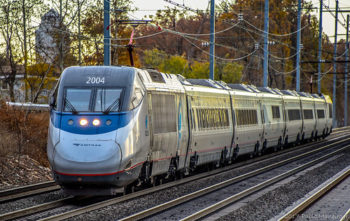 Railways are composed of a traced path on which wheeled vehicles are bound. In light of recent technological developments, rail transportation also includes monorails and maglev. They have an average level of physical constraints and a low gradient is required, particularly for freight. Heavy industries are traditionally linked with rail transport systems, although containerization has improved the flexibility of rail transportation by linking it with road and maritime modes. Rail is by far the land transportation mode offering the highest capacity with a 23,000 tons fully loaded coal unit train being the heaviest load ever carried. Gauges, however, vary around the world, often challenging the integration of rail systems.
Railways are composed of a traced path on which wheeled vehicles are bound. In light of recent technological developments, rail transportation also includes monorails and maglev. They have an average level of physical constraints and a low gradient is required, particularly for freight. Heavy industries are traditionally linked with rail transport systems, although containerization has improved the flexibility of rail transportation by linking it with road and maritime modes. Rail is by far the land transportation mode offering the highest capacity with a 23,000 tons fully loaded coal unit train being the heaviest load ever carried. Gauges, however, vary around the world, often challenging the integration of rail systems.
Pipeline routes are practically unlimited as they can be laid on land or underwater. Their purpose is to move liquids such as petroleum products over long distances in a cost-effective fashion. The longest gas pipeline links Alberta to Sarnia (Canada), which is 2,911 km in length. The longest oil pipeline is the Transiberian, extending over 9,344 km from the Russian arctic oilfields in eastern Siberia to Western Europe. Physical constraints are low and include the landscape and pergelisol in arctic environments. Pipeline construction costs vary according to the diameter and increase proportionally with the distance and with the viscosity of fluids (from low viscosity gas to high viscosity oil). The Trans Alaskan pipeline, which is 1,300 km long, was built under difficult conditions and has to be above ground for most of its path. Pipeline terminals are very important since they correspond to refineries and harbors.
c. Maritime Transportation
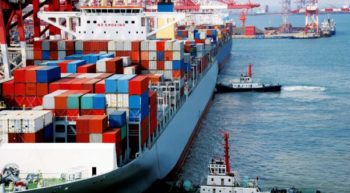 With physical properties such as buoyancy and limited friction, maritime transportation is the most effective mode to move large quantities of cargo over long distances. Main maritime routes are composed of oceans, coasts, seas, lakes, rivers, and channels. However, due to the location of economic activities, maritime circulation takes place on specific parts of the maritime space, particularly over the North Atlantic and the North Pacific. The construction of channels, locks, and dredging are attempts to facilitate maritime circulation by reducing its discontinuity, but such endeavors are highly expensive. Comprehensive inland waterway systems include Western Europe, the Volga / Don system, the St. Lawrence / Great Lakes system, the Mississippi and its tributaries, the Amazon, the Panama / Paraguay and the interior of China.
With physical properties such as buoyancy and limited friction, maritime transportation is the most effective mode to move large quantities of cargo over long distances. Main maritime routes are composed of oceans, coasts, seas, lakes, rivers, and channels. However, due to the location of economic activities, maritime circulation takes place on specific parts of the maritime space, particularly over the North Atlantic and the North Pacific. The construction of channels, locks, and dredging are attempts to facilitate maritime circulation by reducing its discontinuity, but such endeavors are highly expensive. Comprehensive inland waterway systems include Western Europe, the Volga / Don system, the St. Lawrence / Great Lakes system, the Mississippi and its tributaries, the Amazon, the Panama / Paraguay and the interior of China.
Maritime transportation has high terminal costs since port infrastructures are among the most expensive to build, maintain and operate. These high costs also relate to maritime shipping where the construction, operation, and maintenance of ships is capital intensive. More than any other mode, maritime transportation is linked to heavy industries, such as steel and petrochemical facilities adjacent to port sites. Yet, with containerization, maritime shipping has become the linchpin of globalization, allowing trading a wide range of goods and commodities.
d. Air Transportation
Air routes are practically unlimited, but they are denser over the North Atlantic, inside North America and Europe and over the North Pacific. Air transport constraints are multidimensional and include the site (a commercial plane needs about 3,300 meters of runway for landing and take-off), the climate, fog, and aerial currents. Air activities are linked to the tertiary and quaternary sectors, notably finance and tourism, which lean on the long-distance mobility of people. More recently, air transportation has been accommodating growing quantities of high-value freight and is playing a growing role in global logistics.
e. Intermodal Transportation
 Concerns a variety of modes used in combination so that the respective advantages of each mode are advantaged. Although intermodal transportation applies for passenger movements, such as the usage of the different, interconnected modes of a public transit system, it is over freight transportation that the most significant impacts of intermodalism have been observed. Containerization has been a powerful vector of intermodal integration, enabling maritime and land transportation systems to interconnect.
Concerns a variety of modes used in combination so that the respective advantages of each mode are advantaged. Although intermodal transportation applies for passenger movements, such as the usage of the different, interconnected modes of a public transit system, it is over freight transportation that the most significant impacts of intermodalism have been observed. Containerization has been a powerful vector of intermodal integration, enabling maritime and land transportation systems to interconnect.
f. Telecommunications
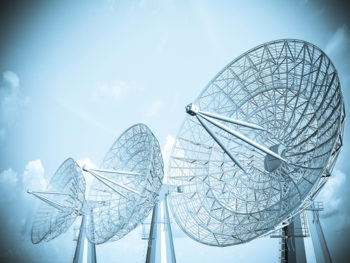 Cover a grey area in terms of if they can be considered as a transport mode since telecommunications often do not have an apparent physicality. Yet, this physicality is real since they are structured as high capacity networks with very low constraints, which may include the physiography and oceanic masses crossed by fiber optic cables. They provide for the “instantaneous” movement of information (speed of light). Wave transmissions, because of their limited coverage, often require substations, such as for cellular phone and data networks where WiFi connections are of even more limited range. Satellites are often using a geostationary orbit which is getting crowded.
Cover a grey area in terms of if they can be considered as a transport mode since telecommunications often do not have an apparent physicality. Yet, this physicality is real since they are structured as high capacity networks with very low constraints, which may include the physiography and oceanic masses crossed by fiber optic cables. They provide for the “instantaneous” movement of information (speed of light). Wave transmissions, because of their limited coverage, often require substations, such as for cellular phone and data networks where WiFi connections are of even more limited range. Satellites are often using a geostationary orbit which is getting crowded.
High network costs and low distribution costs characterize many telecommunication networks, which are linked to the tertiary and quaternary sectors (stock markets, business to business information networks, etc.). Telecommunications can provide a substitution for personal mobility in some economic sectors, but the major impact is related to e-commerce, which has opened a whole range of commercial opportunities.
Transport Infrastructure
Transport infrastructure consists of the fixed installations including roads, railways, airways, waterways, canals and pipelines and terminals such as airports, railway stations, bus stations, warehouses, trucking terminals, refueling depots (including fueling docks and fuel stations) and seaports. Terminals may be used both for interchange of passengers and cargo and for maintenance.
Vehicles traveling on these networks may include automobiles, bicycles, buses, trucks, trains, helicopters, watercraft, spacecraft and aircraft.
Roads
A road is a paved surface to facilitate the movement of people or goods with [#_Road_transport road transport] means, such as automobiles, bicycles, buses, vans or trucks.
Roads in itself are not an interesting security target, but blocking a road will cause problems with the traffic flow and reachability of certain parts of the city or area.
Rails
Rails are the infrastructure for rail transport. A rail road which connects two locations is also called a rail line. As for roads, rails on itself are not an interesting security target, but blocking a railroad will cause large problems with the rail transport.
Pedestrian / Bicycle paths
 Pedestrian paths or sidewalks, curbs, pavements, footpaths or platforms are paths alongside a road designated for pedestrians. Bicycle paths comprises of several different forms of cycling infrastructure, from non-segregated pathways aligned next to the road to segregated cycle facilities.
Pedestrian paths or sidewalks, curbs, pavements, footpaths or platforms are paths alongside a road designated for pedestrians. Bicycle paths comprises of several different forms of cycling infrastructure, from non-segregated pathways aligned next to the road to segregated cycle facilities.
Segregated cycle facilities are a form of cycling infrastructure consisting of marked lanes, tracks, shoulders and paths designated for use by cyclists and from which motorised traffic is generally excluded. The term includes bike lanes, cycle tracks, separated bike lanes, road shoulders and side paths located within a road right-of-way[1].
Urban waterways
 Inter and intra urban transport over waterways such as canals, rivers or other waterways forms a smaller although still important aspect of the urban transport system. For port cities such as Rotterdam, Antwerp or Hamburg the waterway system is of vital importance for their economic development.
Inter and intra urban transport over waterways such as canals, rivers or other waterways forms a smaller although still important aspect of the urban transport system. For port cities such as Rotterdam, Antwerp or Hamburg the waterway system is of vital importance for their economic development.
Subway system
 A rapid transit, underground, subway, elevated railway, metro or metropolitan railway system is an electric passenger railway in an urban area with a high capacity and frequency, and grade separation from other traffic. Rapid transit systems are typically located either in underground tunnels or on elevated rails above street level.
A rapid transit, underground, subway, elevated railway, metro or metropolitan railway system is an electric passenger railway in an urban area with a high capacity and frequency, and grade separation from other traffic. Rapid transit systems are typically located either in underground tunnels or on elevated rails above street level.Bridges and fly-overs
A bridge is a structure built to span physical obstacles such as a body of water, valley, or road, for the purpose of providing passage over the obstacle. A flyover is a bridge, road, railway or similar structure that crosses over another road or railway forming a grade separation. Various different designs are possible depending on the length of the span and the conditions of the site.
Bridges and fly-overs form a vital and vulnerable element of a transport system since blocking can cause serious disruptions in the transportation system. Security risks are high since bridges and fly-overs are generally difficult to reach in case of emergencies.
Terminals
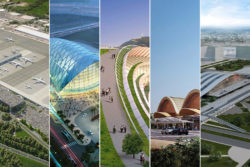 A terminal is any location where freight and passengers either originates, terminates, or is handled in the transportation process. Terminals are central and intermediate locations in the movements of passengers and freight. They often require specific facilities and equipment to accommodate the traffic they handle.
A terminal is any location where freight and passengers either originates, terminates, or is handled in the transportation process. Terminals are central and intermediate locations in the movements of passengers and freight. They often require specific facilities and equipment to accommodate the traffic they handle.
Terminals may be used both for interchange of passengers and cargo. Examples of passenger terminals are airports, railway stations and bus stations. Examples of terminals for cargo are warehouses, trucking terminals, refueling depots (including fueling docks and fuel stations), and seaports.
All terminals are important for security, since it are potential targets for terrorists. Damage will have a big impact, both economically, life danger of people and by hampering the transportation process heavily. Therefore it is recommended to have an extensive and robust transportation system towards and from the terminal and to locate terminals outside urban areas.
Airports
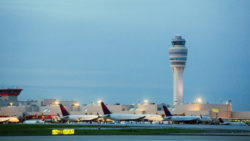 An airport is a location where aircraft such as fixed-wing aircraft, helicopters, and blimps take off and land. Aircraft may be stored or maintained at an airport. An airport consists of at least one surface such as a runway for a plane to take off and land, a helipad, or water for takeoffs and landings, and often includes buildings such as control towers, hangars and terminal buildings.
An airport is a location where aircraft such as fixed-wing aircraft, helicopters, and blimps take off and land. Aircraft may be stored or maintained at an airport. An airport consists of at least one surface such as a runway for a plane to take off and land, a helipad, or water for takeoffs and landings, and often includes buildings such as control towers, hangars and terminal buildings.
Train station
 A train station, also called a railroad station (mainly in the United States) or railway station (mainly in the British Commonwealth) and often shortened to just station, is a railway facility where trains regularly stop to load or unload passengers or freight. It generally consists of a platform next to the track and a station building (depot) providing related services such as ticket sales and waiting rooms.
A train station, also called a railroad station (mainly in the United States) or railway station (mainly in the British Commonwealth) and often shortened to just station, is a railway facility where trains regularly stop to load or unload passengers or freight. It generally consists of a platform next to the track and a station building (depot) providing related services such as ticket sales and waiting rooms.
Metro station
A metro station or subway station is a railway station for a rapid transit system, often known by names such as "metro", "underground" and "subway".
Bus terminal
A bus terminus is a designated place where a bus or coach starts or ends its scheduled route .
Freight terminal
A freight terminal is a processing node for freight. Most freight terminals are located at ports. They may include airports, seaports, railroad terminals, and trucking terminals. Freight is usually loaded onto and off the transport.
Sea port
A sea port (or shortly port) is a location on a coast or shore containing one or more harbours where ships can dock and transfer people or cargo to or from land.
Traffic intersections
At traffic intersections, a certain type of traffic infrastructure is intersecting. Mostly this concerns road intersections, though also rail and air intersections are possible. To prevent incidents at road intersections, the traffic is controlled with traffic signals.
Future Trends of Transport Industry






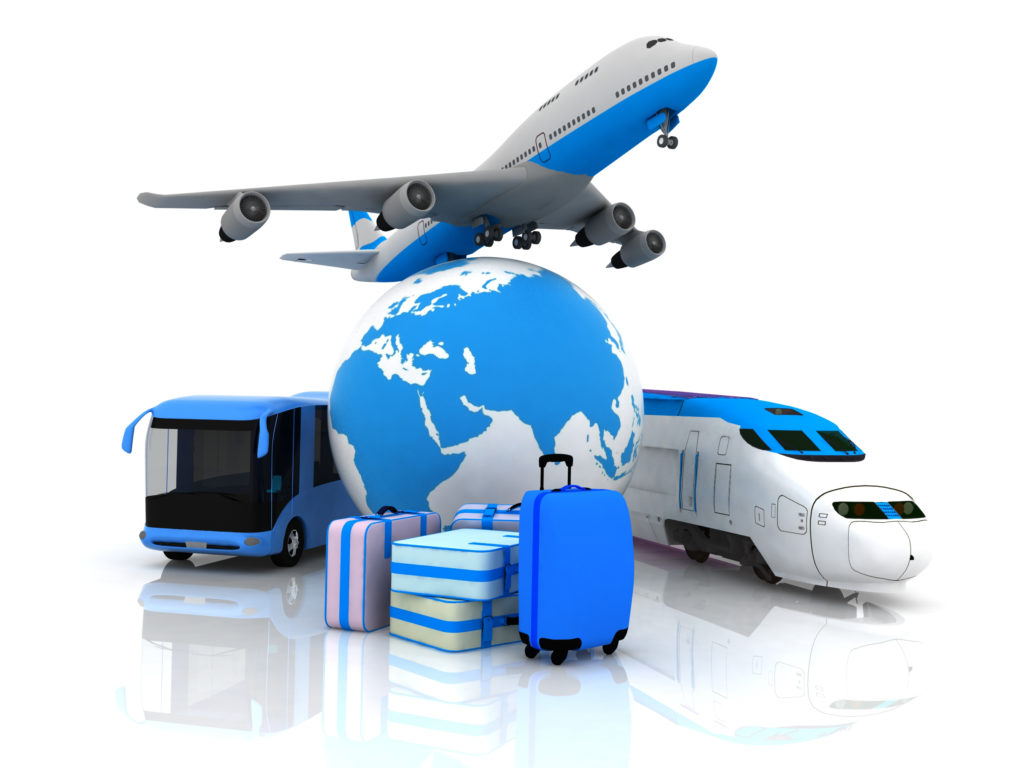

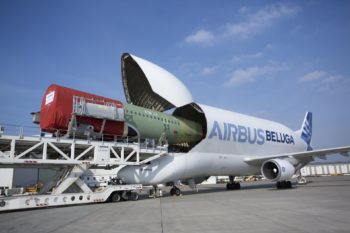 d. Air Transportation
d. Air Transportation
 1.
1. 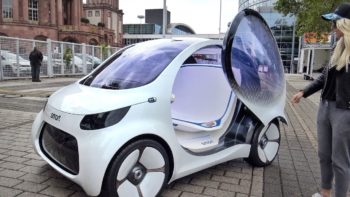 Many consumers already own smart vehicles. The exact definition of a smart car varies between manufacturers, dealers and individuals, but it generally describes a compact, fuel-efficient vehicle that utilizes new and innovative technology to make life easier for the driver and passengers.
Many consumers already own smart vehicles. The exact definition of a smart car varies between manufacturers, dealers and individuals, but it generally describes a compact, fuel-efficient vehicle that utilizes new and innovative technology to make life easier for the driver and passengers.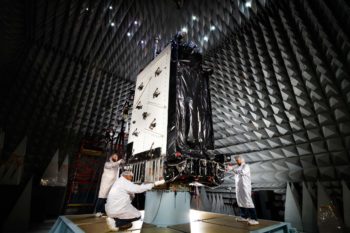 3. Next-Gen GPS Devices
3. Next-Gen GPS Devices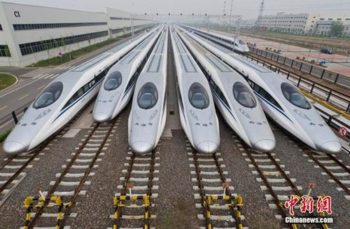 High-speed rail networks are generating tremendous interest all around the globe. The
High-speed rail networks are generating tremendous interest all around the globe. The 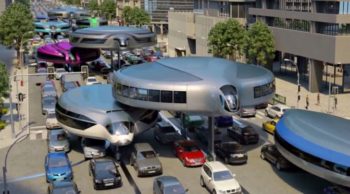 ream use any time soon, hovering vehicles — which are
ream use any time soon, hovering vehicles — which are 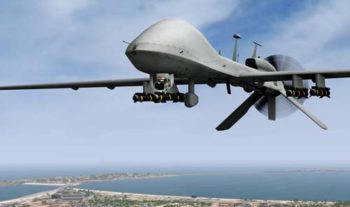 The technology for UAVs is still in the improvement stage. Its developers still face certain obstacles. One such challenge is to improve the software so that it can work effectively on urban roads with heavy traffic. However, this is one of the future trends in transport. In the long term, transport companies need to start preparing for the upcoming technological changes in the industry and start equipping their trucks with self-propelled navigation systems that can “learn” from the experience of real drivers.
The technology for UAVs is still in the improvement stage. Its developers still face certain obstacles. One such challenge is to improve the software so that it can work effectively on urban roads with heavy traffic. However, this is one of the future trends in transport. In the long term, transport companies need to start preparing for the upcoming technological changes in the industry and start equipping their trucks with self-propelled navigation systems that can “learn” from the experience of real drivers.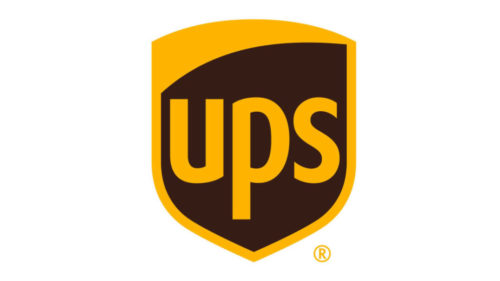
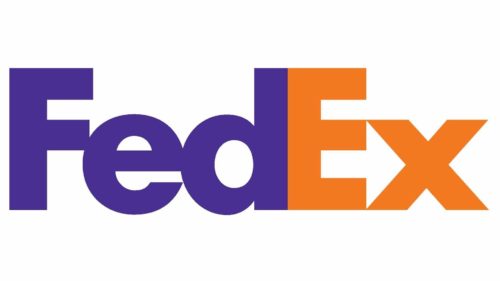
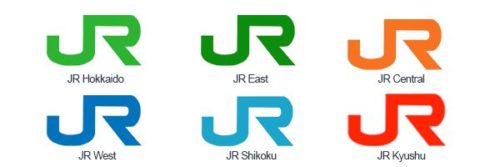
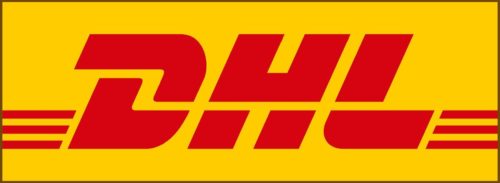
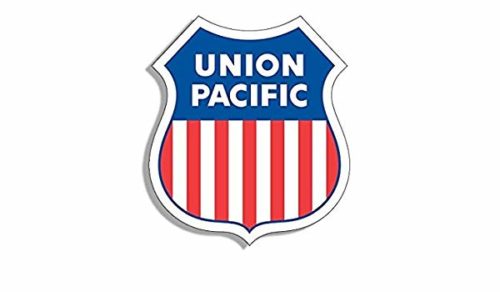
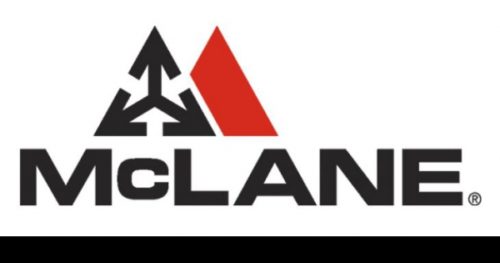



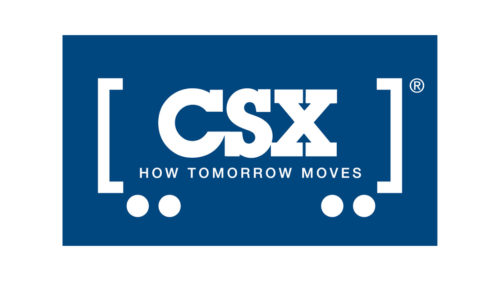

Leave a Reply